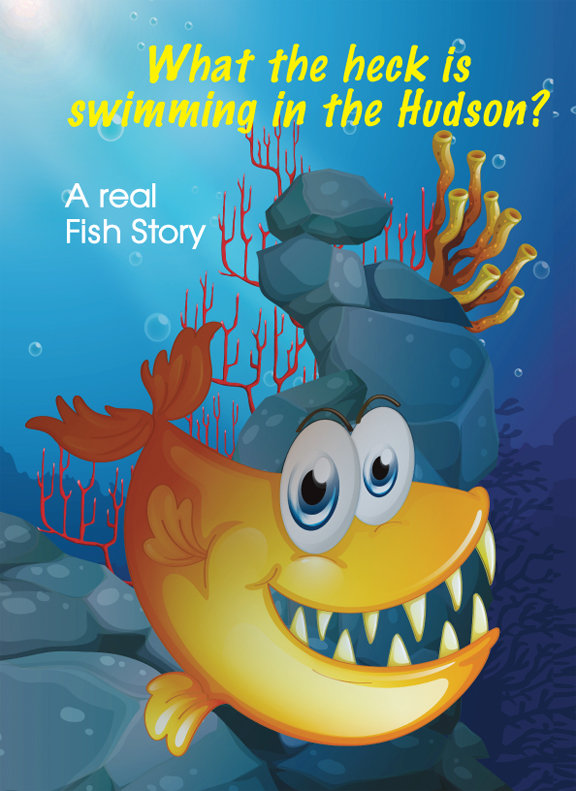This summer, a so-called prehistoric fish washed up in Weehawken near Riva Point. It turned out to be a five-foot sturgeon. According to the New York State Department of Environmental Protection, sturgeons are “pre-historic-looking creatures that have been around since before the dinosaurs.”
The NY DEP notes that the Atlantic sturgeon is the Hudson’s largest fish, often reaching lengths of five to eight feet. In the 1800s, sturgeon were so abundant in the Hudson that they were known as “Albany beef.” By the late 1900s, the caviar and meat of an adult female sold for as much as $3,000. These prices led to overfishing. Adult female and young sturgeon became so scarce that fishing for Atlantic sturgeon was banned in 1996.
The discovery of the smelly dead sturgeon on our shores started me wondering, what else is in the Hudson?
“There are several types of common fish in the river,” says Bob Considine, press officer for the New Jersey Department of Environmental Protection. “Species like winter flounder, white perch, white catfish, eels, crabs, and striped bass are all caught in the river. Striped bass tend toward the northern part of the Hudson.”
Folks at the NJ DEP are not so concerned that folks in Hoboken and other Hudson County towns have a great fishing experience. They’re much more worried that you don’t have a bad eating experience.
“The important thing we stress,” says Considine, “is the state has some pretty strict consumption advisories we issue because oftentimes these fish and crabs contain PCBs.” (A chemical compound considered to be a toxic pollutant).
The area of the Hudson we’re talking about runs roughly from Alpine to the north to Bayonne to the south. The DEP’s advisory defines “high risk populations” as infants, children, pregnant women, nursing mothers, and women of childbearing age.
High-risk populations are advised not to eat striped bass, white perch, white catfish or American eel. They can eat winter flounder one meal per month. The rest of the population can eat striped bass four meals a year; white perch, one meal a year; American eel one meal a year, and winter flounder one meal per month, but no white catfish.
It’s OK for both populations to eat one meal of seven blue crabs a week, with the caveat that you should discard cooking liquid and not eat the green gland.
Yikes, it seems like unless you really have no other food source, it would be best to throw back what you catch!
Fish Story
